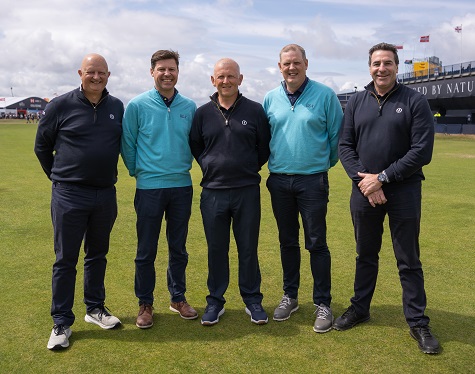
Paul Woodham, head of sustainable agronomy - Europe, highlights the importance of The R&A’s Sustainable Agronomy Service and what this means for golf facilities across the country and globally.
The R&A launched its new Sustainable Agronomy Service in 2022 and since then over 150 clubs are now working with our team. Our aim is to support clubs with research and guidance which will enable the development of sustainable solutions that address threats and opportunities for golf. We want to raise standards in sustainable agronomy and influence a positive change in greenkeeping, so that best practices are applied and reflect requirements for sustainable golf.
Climate change, increasing costs and changes in legislation are impacting the management of golf facilities and so we need to adapt to these challenges in a sustainable manner and work with industry stakeholders to develop appropriate solutions.
Over the past five years we’ve seen certain pesticides being withdrawn and changes in EU Sustainable Use Regulations mean we are moving further towards non-pesticidal course management in the very near future. Furthermore, additional legislation relating to water usage will tighten the rules on how golf facilities can access water from abstraction or mains supply water. Where there may not be legislation change, increasing costs and decreasing access to mineral resources mean that facilities will need to evaluate their current methods.
Another example of where the industry could face challenges is the management of worm casts through the upcoming winter months. Worm casts are becoming far more visible and there is currently no chemical control available. This can pose problems for golfers who may begin to question the upkeep of the course. Good communication and education in addition to directing maintenance strategies and positive change to the course environment is key – which is where we step in.
We can offer thought leadership pieces to the industry, which are useful resources for golfers at all levels, as well as managers and committee members at individual facilities. With sustainable practices, come questions from members on why certain things are happening and why the greenkeeping staff may be embarking on particular techniques. We need to ensure that the right messages filter through the entire facility about the importance and relevance of the responsible removal of trees to allow more light and airflow to gain natural reduction of disease risk and to create more diversity in course vegetation and species habitat.

The R&A team. L-R:: Paul Woodham, head of agronomy, Europe; Simon Watson, senior agronomist; Alistair Beggs, head of Aagronomy at The R&A; Gordon Howat, senior agronomist; Chris Gray, head of sustainable golf and agronomy, Asia-Pacific
The R&A Sustainable Agronomy Service is here to promote achievable sustainable improvements as part of a holistic plan to prepare for the future. We have a team in place to direct, guide and support golf facilities – not just in Great Britain and Ireland, but throughout Europe and Asia Pacific.
We support facilities with changes they can make in the immediate term, as well as in future years, to encourage and support superior course conditioning year-round in the most sustainable and achievable way.
The fees associated with our service are reinvested into our research and education programmes. Across the entire organisation, we’re committed and passionate about moving the game forward. Hopefully, clubs will feel the benefit of expert consultancy, direction and support, with the knowledge they’re giving back to the game through investment in global research programmes.